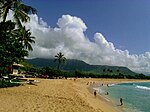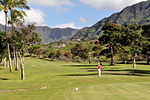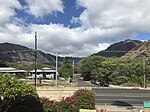Telstra Endeavour
2008 establishments in Australia2008 establishments in HawaiiAustralia–United States relationsInfrastructure completed in 2008Submarine communications cables in the Pacific Ocean ... and 1 more
Telstra
The Telstra Endeavour is a submarine cable connecting Sydney and Hawaii. The cable went live in October 2008, with a capacity of 1.28 terabits per second in the future (currently at 100 gigabits per second.) It was proposed on 28 March 2007 by Telstra, the largest telecommunications carrier in Australia. Initially with a lit capacity of 80 Gbit/s, Telstra announced an increased capacity to 100 Gbit/s in January 2015.
Excerpt from the Wikipedia article Telstra Endeavour (License: CC BY-SA 3.0, Authors).Telstra Endeavour
Farrington Highway,
Geographical coordinates (GPS) Address Nearby Places Show on map
Geographical coordinates (GPS)
| Latitude | Longitude |
|---|---|
| N 21.554019 ° | E -158.242889 ° |
Address
Farrington Highway (State Highway 93)
Farrington Highway
Hawaii, United States
Open on Google Maps









